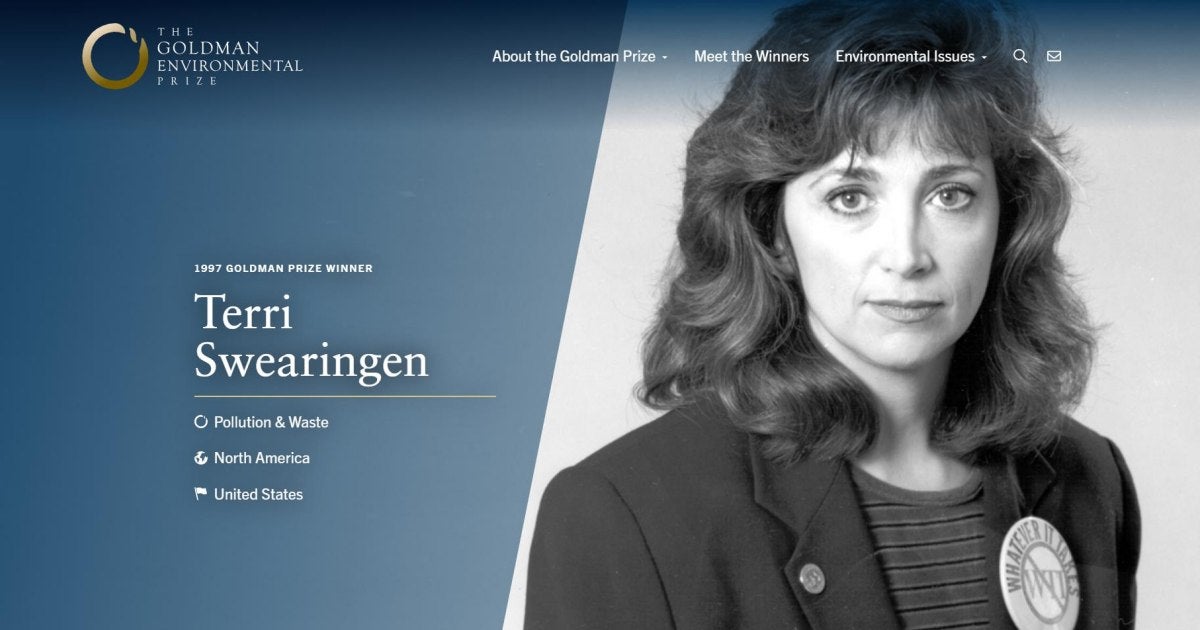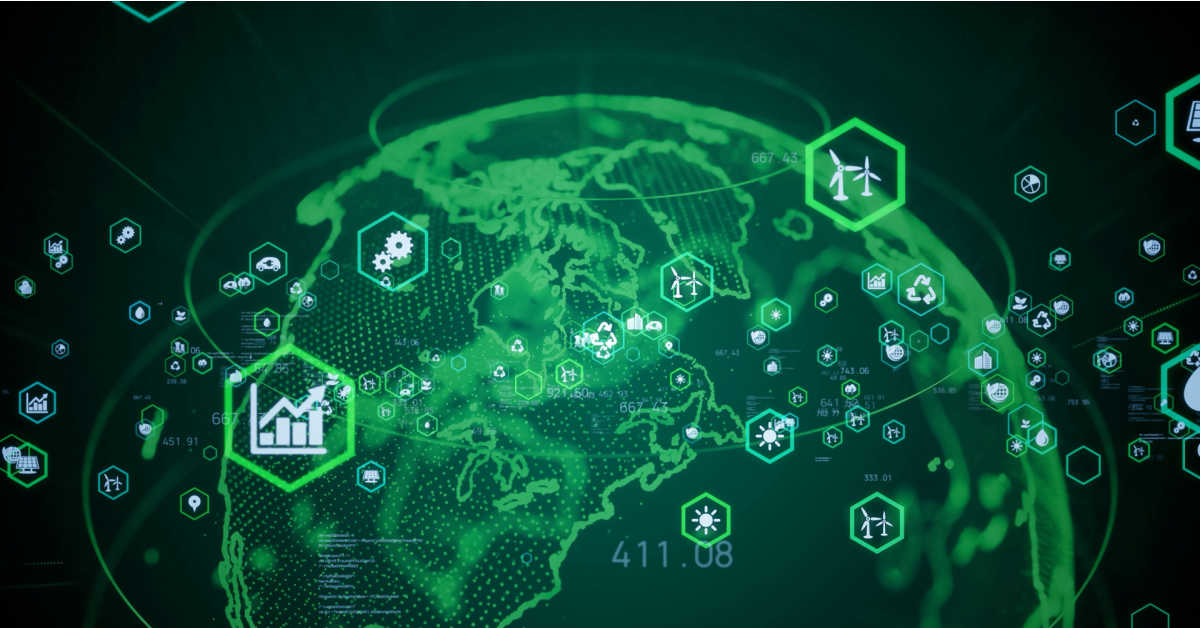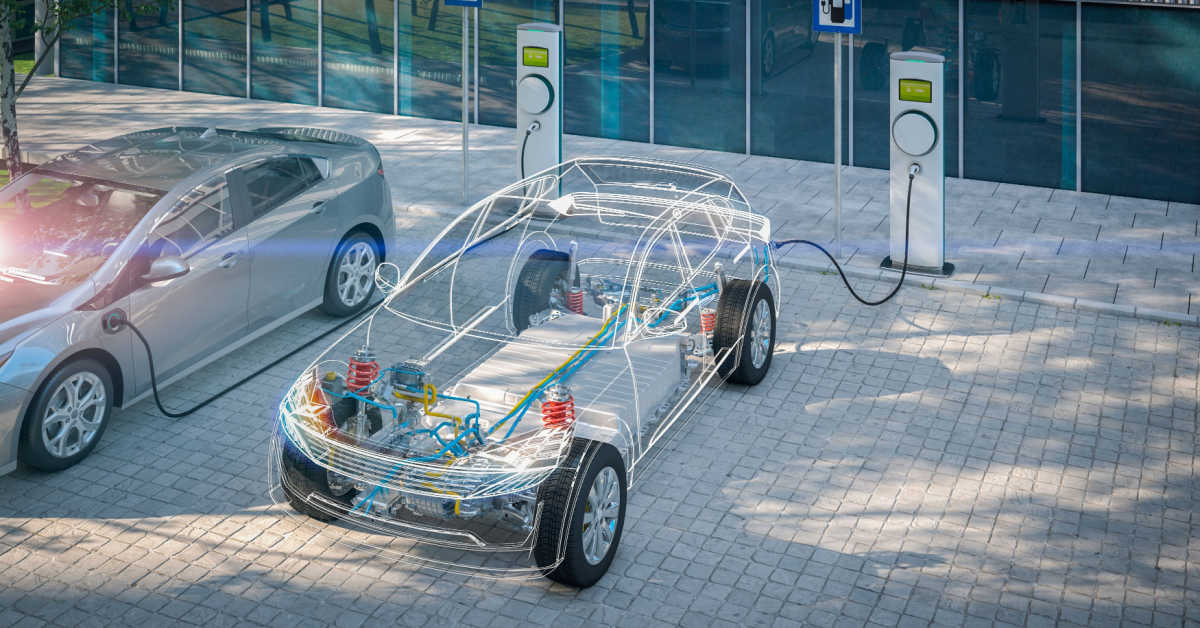Terri Swearingen was a nurse and the winner of the 1997 Goldman Environmental Prize. She once stated that "We are living on this planet as if we had another one to go to."

Source: https://www.goldmanprize.org/recipient/terri-swearingen/
Humans have the instinct to create. This instinct led to the inventions that shaped the world we live in today. Unfortunately, the strides taken to advance our society tend to have draining consequences for the planet we inhabit.
We are aware of the consequences global warming and climate change have had on our planet in recent centuries. This is mainly due to human activities.
Humans are advancing rapidly, leaving destruction in their wake. These ripple effects are quickly catching up. To counter these effects, the concept of digital sustainability was introduced.
What Is Digital Sustainability?
Digital sustainability refers to those actions that aim to reduce the effects that increasing technology has on the environment. Now, we understand the basics of what causes environmental damage but usually at an elementary level of simple pollution.
Data processing and app development require infrastructure, energy, and resources. These resources leave behind a trail that can harm the environment. Digital activities can be just as damaging to the planet as physical ones.
Technology has a double-sided effect. On one hand, it can add to environmental strain. On the other, it can help reduce it. Examples include reduced paper usage in offices, virtualized servers, and cloud architecture.
Digital sustainability refers to reducing the effects of technology on the environment. It also refers to the steps organizations take to use those technologies to implement sustainable practices.
A factory has the option of utilizing automated production lines that are more efficient with resources. A distributor can decide to incorporate a solar energy system to boost business. Developers can choose to use a virtual server instead of a physical one. All these actions help to minimize the digital carbon footprint left behind and increase our digital sustainability.

What Are Some Examples of Digital Sustainability?
Digital sustainability exists in various forms as technology influences our lives in a variety of ways. Some examples of digital sustainability include:
E-Waste Management
Electronic waste - or E-waste - is the remains of discarded electronic devices or hardware. Most of these products have harsh chemicals and toxins that can endanger humans and the environment alike.
The World Counts reported that 90% of E-waste is disposed of in landfills in developing countries. The workers are paid a meager amount of US$ 1.50 per day to handle them. This exposes them to the risk of injury and sickness.
Circular Design
Circularly designing products and services promotes reuse and recycling. A circular design considers the environment and sustainability when creating something. We use modular components with extended lifespans to reduce waste.
These components can be repaired or upgraded when needed, instead of throwing them away. We also make biodegradable items, which makes disposal easier.
Sustainable Technology
This refers to technology that aims to counteract environmental strain specifically. From predictive analytics and optimized engineering in agriculture and manufacturing to smart grids and sensors for weather patterns and carbon emissions.
At the NOAA’s Pacific Marine Environmental Lab, scientists use specialized buoys to understand our weather patterns, climate, and ocean health. This technology enables them to measure ocean acidification, dissolved carbon dioxide, and other crucial water chemistry for coral reef health. Additionally, other buoys are capable of forecasting tsunamis and analyzing how the ocean influences monsoons.
All this information is critical in creating a sustainable world and mitigating the risks of lasting environmental damage.
Efficient Data Centers
These are companies that ensure resources are used optimally with no wastage. Data centers process massive amounts of data which is naturally a big energy-consuming task.
Renewable energy resources should be used to improve the digital sustainability of a data center. Cloud-based virtualization should replace physical infrastructure. These steps will have an immediate effect.
Remote Working Environments
The Covid-19 pandemic has introduced more of the world to remote working setups which have improved digital sustainability. When people work from home, the expected carbon emissions from the transit between homes and offices are drastically reduced. Also, remote working means less resource usage in an office building – saving on electricity, water, paper, and more.
What is Digital Climate Change?
Digital climate change is the term used to describe how technology is accelerating climate change and affects us all. Climate change is the long-term shifts in weather patterns and temperatures on our planet.
The drastic surge of late is largely caused by human activities. We are burning fossil fuels, polluting oceans, destroying lands, and poisoning the air. All of these activities have had a negative effect on our environment.
The National Centers for Environmental Information (NCEI) predicts that 2023 will be one of the 10 warmest years on record. The annual increase of atmospheric carbon dioxide over the past 60 years is 100 times faster than natural increases.
Digitalization of the world is happening quickly. This has caused an increase in the use of resources and the release of more carbon emissions into the environment. Production and distribution of digital products and services can have a direct impact on climate change. This is due to a lack of commitment to sustainable practices during manufacturing, distribution, or disposal.
Environmental, Social, and Governance (ESG) Initiatives in Digital Sustainability
The ESG framework is designed to help stakeholders understand and reduce risks associated with environmental, social, and governance criteria. The effects of climate change are devastating. However, recognizing potential opportunities is crucial for big businesses. This is why these initiatives are so important.
The Wall Street Journal reported that, by 2030, estimated investment opportunities in emerging markets will total US$ 23 trillion. This was a consequence of the UN's Paris Agreement drawn up in 2015. Sustainable practices seen through the lens of a business will encourage more organizations to push toward renewable resources and practices.
Thomas Saueressig wrote a blog about the enormous task of reinventing the global energy system. This effort requires the participation of all nations, industries, and people.
In the Philippines, the government has been promoting sustainability by introducing policies encouraging organizations and businesses to adopt ESG initiatives. Large enterprises are pushed to contribute towards achieving a circular economy which will help reduce resource wastage and encourage recycling.
Singapore established an ESG Impact Hub. Its purpose is to encourage businesses, stakeholders, and financial institutions to participate in Singapore's sustainable initiatives. These initiatives are crucial as they:
- Promote renewable resources such as solar or wind energy solutions.
- Create an attractive label for companies who use greener practices – making sustainable actions an ideal standard.
- Encourage the creation of newer technologies that can increase digital sustainability.
- Push the general public into adopting these sustainable practices in their capacity.
- Leverage the support of governments and higher organizations to enforce better resource usage and disposal practices.
- Create a world in which sustainable efforts are more accessible and affordable – especially in developing countries.
Enforcing Green Initiatives
Ideally, companies should be rushing towards digital sustainability for the sake of the planet they live on. Sustainable practices can be hard to implement when most business models have always used as much as possible without giving back.
In 2015, the UN drafted the Paris Agreement. In this agreement, 196 Parties at the UN Climate Change Conference (COP21) pledged to reduce global warming.
The goal was to limit the increase in global average temperature. This should not exceed 2°C above pre-industrial levels. Ideally, the increase should be limited to 1.5°C above pre-industrial levels.
The Paris Agreement is important in the climate change history. It was the first binding agreement to bring all nations together to tackle climate change and adapt to its effects.
In 2021, the Glasgow COP26 Climate Pact was created. Its priority goal is to uphold the 1.5°C limit as set by the Paris Agreement.
More than 110 companies signed up for the EV100 pledge. This pact commits them to have fully zero-emission vehicle fleets by 2030. Additionally, over $20 billion was pledged to support developing countries in scaling up clean power solutions and transitioning away from coal.
The UN’s Coalition for Digital Environmental Sustainability (CODES) published an Action Plan for a Sustainable Planet in the Digital Age. The goal was to offer a vision and set of priorities. These priorities were to advance digital sustainability.
To do this, a series of multi-stakeholder impact initiatives were proposed. These initiatives require collective action and collaboration.
Organizations in the Philippines must transition to more circular operations. This is due to the Extended Producer Responsibility (EPR) Act of 2022. The Act requires large enterprises to recover their plastic packaging waste or pay a hefty fine.
Lawmakers and governments around the world are working hard. Their goal is to create a sustainable future by implementing green initiatives.
How Does Technology Provide Greater Sustainability?
Technology has had a draining effect on our natural resources. However, as mentioned before, technology also enables sustainability in its ways:
Internet of Things
The Internet of Things (IoT) is a network of devices that are connected that we use in our daily lives. This technology offers convenience by allowing you to monitor and manage almost any electronic device in your home from any location. Due to this interconnected nature, the IoT does not waste energy or resources and promotes sustainability.
Renewable Technology
The research and development of better renewable energy solutions have been a great testament to the role technology plays in sustainability. Companies and regular households alike are now looking to integrate solar, hydro, or wind power as energy supply. People are also more likely to introduce renewable technology into their daily lives as it becomes increasingly more affordable and accessible.
Reduced Digital Infrastructure Development
The digital age is also the age of virtualization. Cloud computing is not only sustainable but much more efficient and secure. Virtual infrastructure has all but removed the need for large physical servers that drain energy.
We can now manage processing, networking, and storage tasks within a virtual environment, using the resources of a single physical server. This is much simpler than it was previously. Cloud computing also minimizes the need for constant on-site maintenance and prevents E-wastage and idle infrastructure. Less space needed for servers also means less cooling required for server operation - therefore reduced power usage.
Circular Economy
As said before, a circular economy is based on the production of sustainable goods and services that promote recycling and reuse. Advances in technology such as additive manufacturing, digital twins, and blockchain improve resource efficiency and support a closed-loop system. They minimize waste and encouraging sustainability.
Sustainable Transportation
Electric vehicles don’t burn fossil fuels and public transport systems are constantly improving. Sustainable transportation provides greener ways to get to where you need to be.

A Global e-Sustainability Initiative (GeSI)states that low to middle-income countries face considerable barriers to implementing sustainable technologies. These barriers include a lack of funding, inadequate communications infrastructures, and unstable political environments. However, as technology advances and becomes more accessible, so will opportunities to help the environment.
How Does the Improvement of Digital Skills Enhance a Country's GDP?
A country’s GDP depends on its ability to produce quality final goods and services in a given period. The world is already almost entirely dependent on technology which makes a digital skillset a critical asset.
Amazon Web Services (AWS) and Gallup conducted research on this topic. The result shows that advanced digital skills raise the global GDP by an estimated US$ 6.3 trillion each year. The rise will be brought by boosting worker income and productivity. Including basic and intermediate digital skills, the total annual global value of digital skills comes to US$ 18.5 trillion.
A study found that digital skills can have a great economic impact. They can increase GDP, revenue, innovation, wages, job security, and job satisfaction. Businesses that use new technologies, and those that have the right skills, benefit the most.
Better digital skills will help your country’s GDP by:
- Efficiently producing more goods and services through automated machinery to keep supply chains running.
- Increasing productivity in your workforce through better utilization of human resources.
- Enhancing your country’s agricultural and produce sector by implementing advanced farming techniques and technologies.
- Allowing your country to find innovative and sustainable ways to mine for natural resources.
- Encouraging investments from other countries.
- Improving your own country’s digital literacy, infrastructure, and capabilities.
- Increasing the general income of each citizen as advanced digital skills warrant higher incomes.
Creating digitally skilled employees guarantees that your business will not only survive but thrive in a constantly advancing world.
Digital Sustainability is an Essential Agenda
Reliance on technology and global warming have forced us to take a better look at digital sustainability.
Digital sustainability is now necessary for businesses. This is because global warming and our contribution to it can no longer be overlooked.
Digital sustainability has to become an essential part of our lives if we wish to continue our stay on this planet. It is our duty to create technologies that reduce the human impact on our consumption and evolution. We must do this for ourselves, and future generations.
Sangfor’s Dedication to Digital Sustainability
As a leading cloud computing and cybersecurity company, Sangfor delivers sustainable solutions that will not harm the environment. Sangfor’s cloud platforms focus on green cloud computing practices to minimize our impact on the planet and promote digital sustainability.
Sangfor’s cloud platforms reduce infrastructure demands for organizations which leads to less energy use and fewer emissions. These cloud platforms focus on security, operational integrity, scalability, and reliability.
Green cloud computing practices have several benefits for both the planet and businesses. These range from infrastructure optimization and data efficiency to energy saving. Sangfor understands its role in reducing our carbon footprint and creating technologies that promote a renewable future.
We have hosted many initiatives to promote sustainable innovation. An example is the webinar hosted by Cheney Hu that was titled “Enabling A Greener World with Digital Transformation.” It focused on how Sangfor and digital transformation can reduce the effects of climate change.
Naturally, Sangfor aims to find realistic ways to pursue sustainable development through its platforms and services. The first step towards digital sustainability means pushing the flexibility of your business.
This is why the Sangfor hybrid cloud solution makes use of reduced on-premises infrastructure combined with unlimited public cloud resources. Sangfor is proud of its wide range of virtual platforms and products. These can help you meet your digital sustainability goals. Visit www.sangfor.com to learn more.





